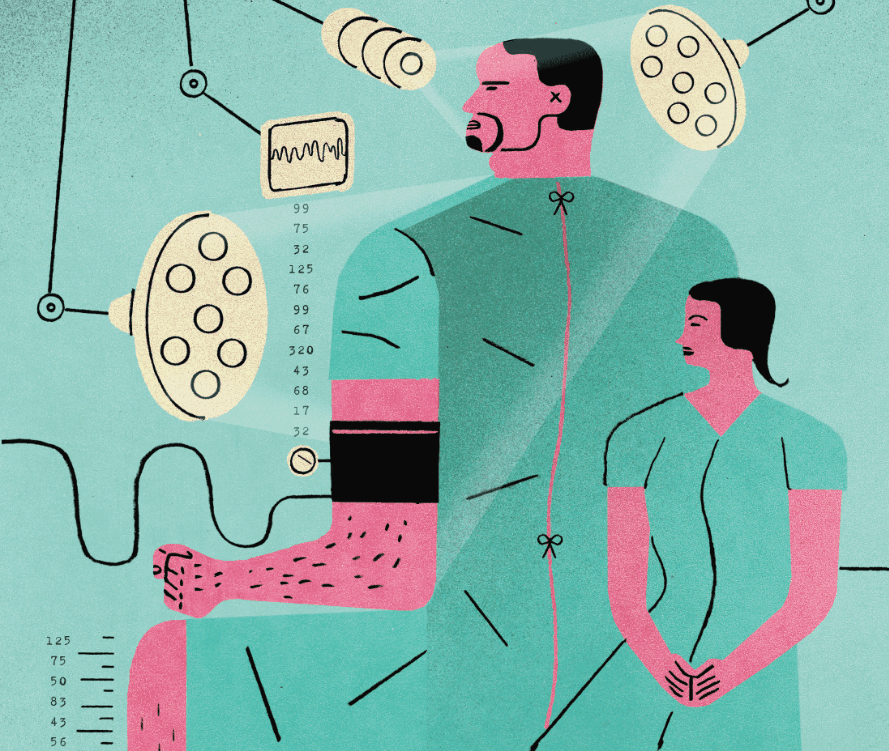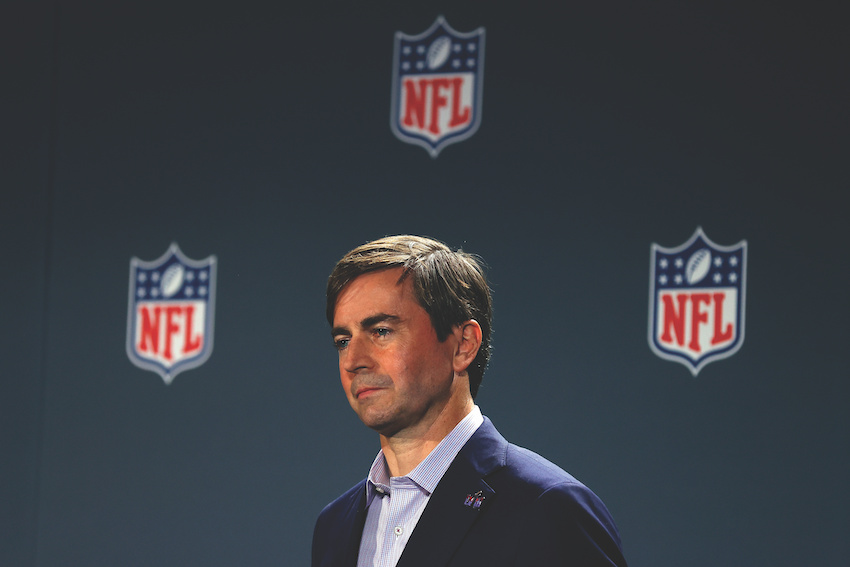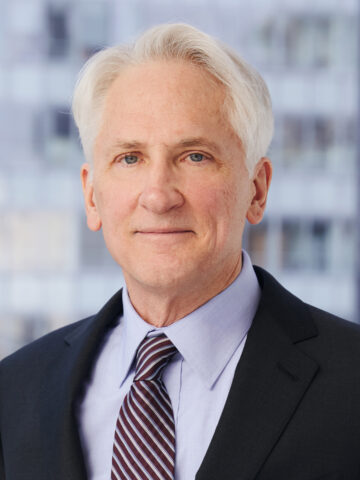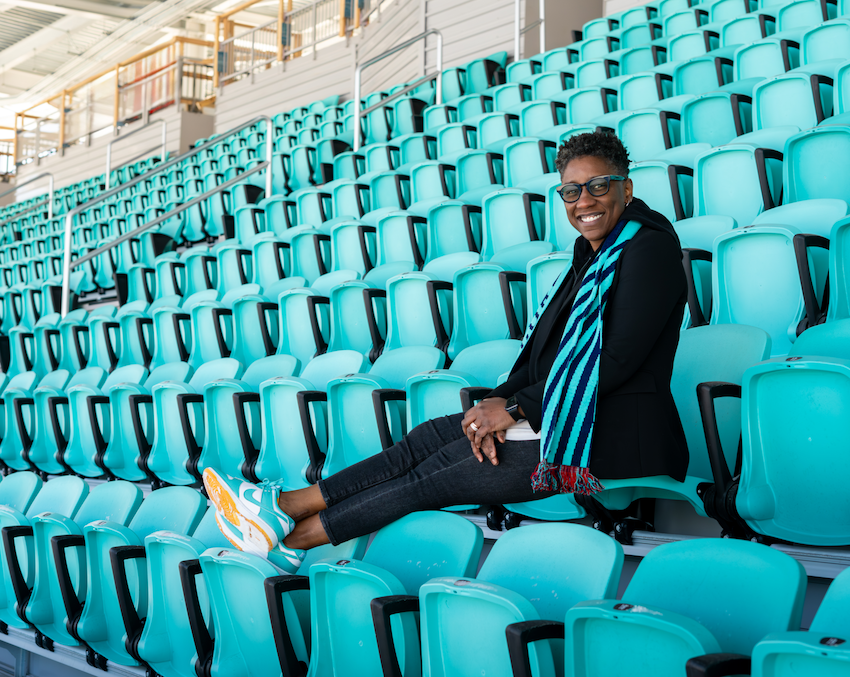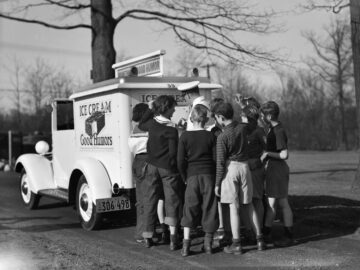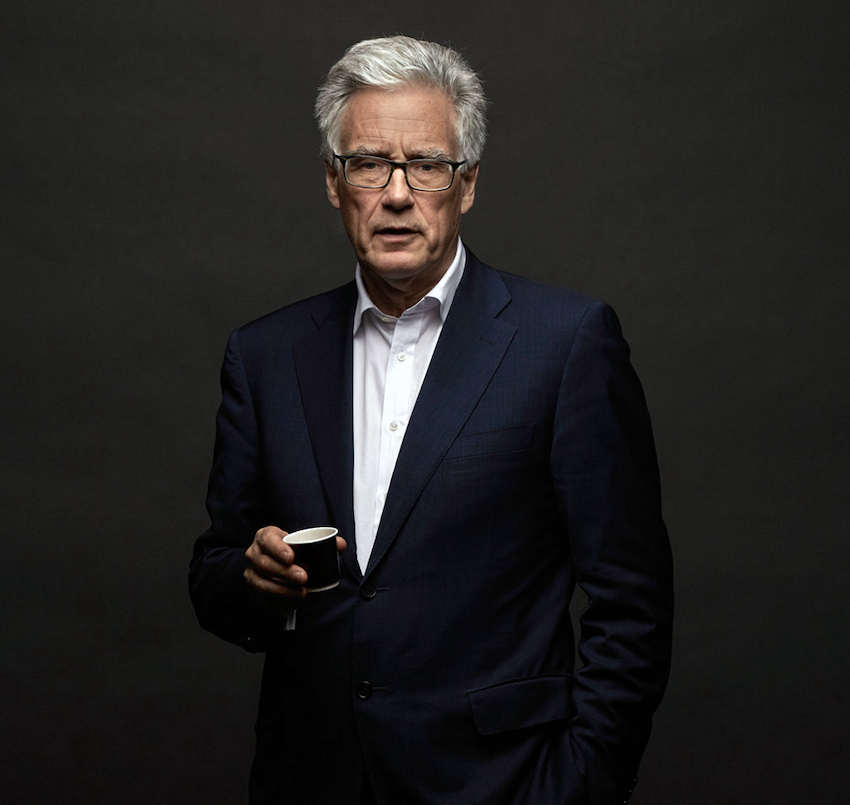Fans of America’s most popular sport want more NFL during the off season, more NFL around the globe. Delivering that growth is O’Reilly, a League EVP who also runs the Super Bowl.
In the lead photo, at a press conference ahead of Super Bowl 58 in February, O’Reilly announced the NFL will be heading to Spain in 2025 for the first regular-season game ever in that country.
The first time the NFL held its draft outside New York City, Peter O’Reilly was nervous. Would fans come? While the Draft had grown in scale over the years and shifted to a prime-time event, O’Reilly and his team dreamed bigger, envisioning a three-day festival and celebration of football so compelling that fans would travel to it each year in mass. It’s not as though he needed to invent suspense or drama: Draft choices can determine how a fan’s favorite team fares in the upcoming season.
But would fans come? Arriving in Chicago the night before the 2015 draft, O’Reilly looked out of his hotel window onto Grant Park, where the Draft was to be held, and spotted fans lining up more than 24 hours ahead of time. That calmed his nerves. “That’s when I texted someone: ‘This is going to be big,’” says O’Reilly.
Big? This past spring, 700,000 fans representing all 32 teams converged on Detroit for the 2024 NFL Draft. “Never underestimate our fans,” O’Reilly says.
Don’t underestimate O’Reilly either. That night in Chicago, when he saw fans lined up far in advance of the event, “I went out and talked to some of the fans at the front of that line, and those are still people I’m in touch with today. They’ve made it to every single draft since then. The Draft is a pilgrimage for them. Our fan base is just incredible.”
The EVP in charge of Club Business, International & League Events, such as the Draft and the Super Bowl, O’Reilly is not the face of the NFL. Then again, neither is his boss, Roger Goodell, Commissioner since 2006. Inside the C-Suite of the NFL, it is understood that the face of the League is every fan’s favorite player, whether that be Lamar Jackson or Christian McCaffrey or Tyreek Hill.
Since joining the League in 2005 as Director of Fan Strategy and Marketing, O’Reilly has assumed ever-greater responsibilities. And yet his focus has never shifted from fans. He has brought ever more fans and viewers to the Super Bowl, ever more fans to off-season events like the Draft, and ever more regular-season games to fans in countries like England, Germany, Mexico and, this year, Brazil.
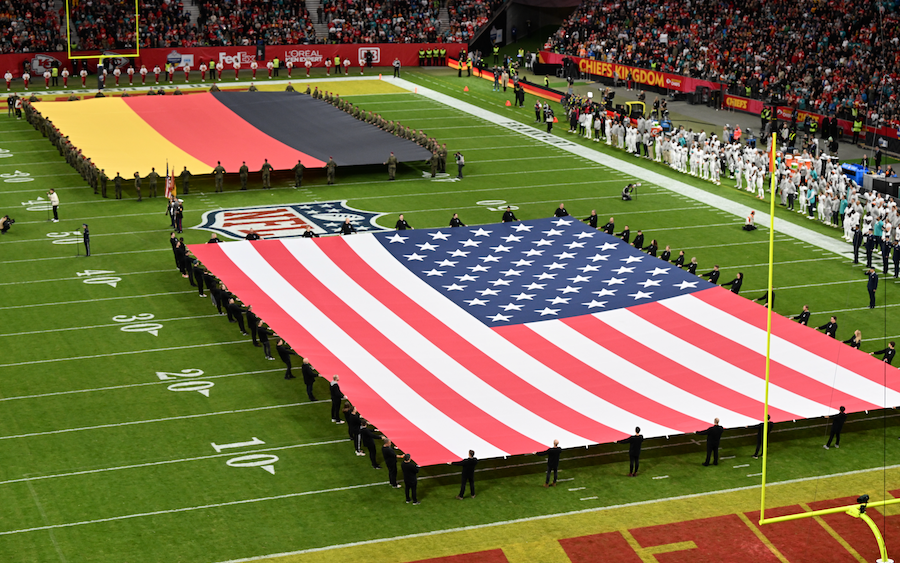
Both American and German flags were unveiled ahead of the NFL’s first-ever regular season game in Frankfurt, held in Deutsche Bank Park in November 2023.
As the EVP of Club Business, O’Reilly also excels as the League’s liaison with team senior leadership to help them grow their businesses. “Peter is super smart, balanced, detail-oriented and trusting of his staff. He knows he can’t do everything,” says Damani Leech, President of the Denver Broncos and previously a colleague of O’Reilly’s at the NFL. “He wears velvet gloves. Underneath he’s as tough as iron, but fundamentally he’s a nice guy.”
In choosing sites for future international games or Super Bowls, O’Reilly must collaborate with politicians, union leaders, team owners, fans and others, and his success is a measure of his trustworthiness. “When you climb through the ranks of any organization, you don’t always encounter good, kind people,” says Leech. “Peter is good and kind.”
At a conference room at NFL headquarters in New York, not far from an elegant display of all 58 Super Bowl rings, O’Reilly recently talked with Brunswick Review Editor Kevin Helliker about possible sites for future international games, why he is such an ardent supporter of flag football and how being Senior Manager for the 1993 Notre Dame football team was the ideal preparation for a career at the NFL.
Were sports a big part of your childhood?
I was born in New York City, grew up just outside of it in Westchester County, the youngest of six kids. I grew up a Giants fan, very much passed down from my father, who was also a Notre Dame football fan. When my father was growing up in Brooklyn, a priest took him under his wing and helped him earn a scholarship to Notre Dame. Daddy entered Notre Dame in the early ’40s, left to fight in World War II, and afterward came back to Notre Dame and graduated.
From as early an age as I can remember, I am lying under my father’s chair watching Notre Dame football games with him. We watched other teams, other sports too. “Any sport in a storm,” my father would say. I played every sport and dreamed of playing at the highest levels. Trying to walk onto the Notre Dame baseball team, I realized I could not play at the Division I level. Then began what turned out to be my real career in sports.
When you’re a fan you see two types of models—the player and the announcer. But in the spring of my freshman year, I went down a different path, the student manager program, and that changed everything. I learned that the team on the field is larger than the players you see. There are team members in the shadows that are crucial to success. As freshman and sophomore student managers, you work on every sport. Then you work your way up and are chosen by your peers to be one of three head football managers.
“It’s a rallying cry at the NFL. Everyone at the League is responsible for remembering that we compete in a global world.”
You were Senior Football Manager of the famous ’93 Notre Dame football team, led by the legendary Coach Lou Holtz, with a final ranking of No. 2 in the country. Did that experience bear lessons that turned out to be relevant to your professional career?
Oh, yes. A lot of those lessons from Notre Dame carry me through the challenges I face today, for instance the Super Bowl. As a Senior Football Manager at Notre Dame, you lead a group of 250 other students. It was an incredible process for building confidence and learning how to lead.
In a great example of leadership Coach Holtz made a point of recognizing everybody. Once or twice a season, Coach Holtz would give a game ball to each of the head managers. I’ve got mine behind glass here. [He points back toward his office.] Those years at Notre Dame brought me so much joy. I’ve got a special place in my heart when I see “student manager” on a résumé.
It must be daunting to be in charge of the Super Bowl, the most-watched show on the planet.
It’s in New Orleans this year, and we have a great team. When we’re putting on the Super Bowl, or the NFL Draft, or an international game, the only way we’re successful is if we pull all the experts into one tent. I don’t mean just internally. We need our partners, our vendors, our sponsors, all under one tent, articulating what we are trying to achieve here and cultivating a sense of trust.
Planning multiple years out requires a team mentality. When the Super Bowl is still far on the horizon, we make sure we’re all on the same page, whether with our broadcast partners or our sponsorship partners. Super Bowl after Super Bowl, setting that standard: “This is what greater success looks like.” It allows people to study the playbook, and go off and deliver it.
In those moments after you’ve pulled off yet another successful Super Bowl, is there an in-the-shadows celebration?
For the Super Bowl, we’ve got something called NFL Control. No one would know that it exists, but it’s got every function across the NFL represented in one room—for instance all the public safety folks. It’s the nerve center of the Super Bowl. In the nerve center, you’re putting out fires. Seeing around corners. You’re working with a team that’s been planning together for multiple years how to handle every contingency. When the Super Bowl goes well, certainly there is celebration and camaraderie around that team. You celebrate. You recognize individual contributions.
And that team is never quite the same the next year. We were in Las Vegas last year for the Super Bowl. We’re headed to New Orleans. We were in Detroit last year for the Draft. We’re headed to Green Bay. You pull in the distinctiveness of the location while keeping the core solid.
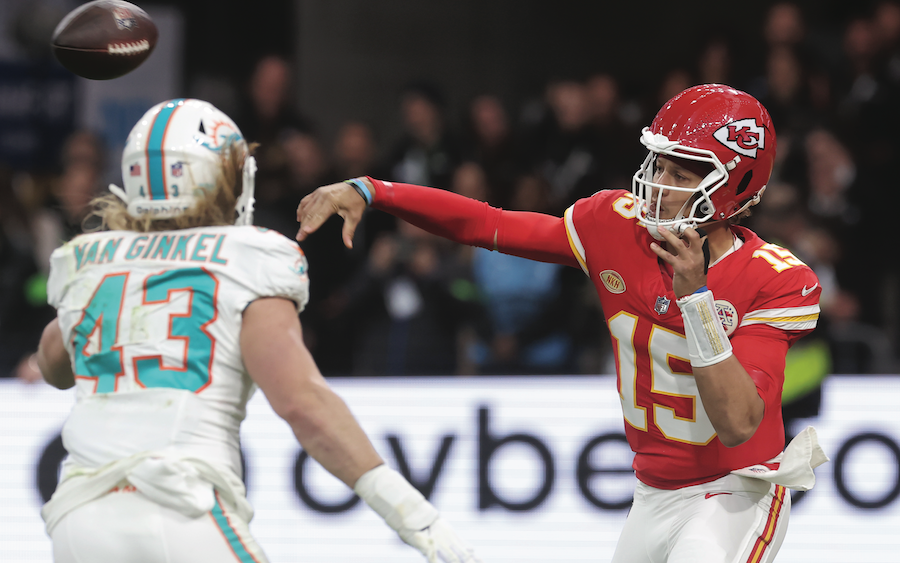
In the game that followed the above unfurling, Patrick Mahomes and the Kansas City Chiefs defeated the Miami Dolphins.
Are you surprised by the strong international demand for NFL football?
In the decades prior to my joining the NFL, there was a good number of preseason games played around the world. I am standing on the shoulders of people like Mark Waller, who was Head of International back then. Commissioner Goodell was also very involved. Mark Waller said: “We need to bring our best product, our regular season game product, live to [international] fans.” That was the impetus to build that set of regular-season London games.
And what you’ve seen in recent years is that commitment to really go beyond some of these core markets and look at, “Where is our fan base strong? Where is there this pent-up demand and love for our game?” And that was the decision to go to Germany, which has really been special.
Is that measured through internet viewership?
We’ve got a fan tracker study that closely looks at fandom—overall fandom, avid fans, casual fans. It’s a baseline study that allows us to follow that. But then, obviously, also looking at viewership, social media engagement and engagement in the sport overall.
Take Brazil, for example, we saw the engagement when we did Super Bowl viewing parties or game watch parties down there. People would be coming out. And so, the games aren’t ends. They’re beginnings. They’re bringing the sport there in a real and authentic way.
In Germany, as in the US, and now in Brazil, we’re seeking year-round engagement. The [NFL Scouting] Combine. The Draft. We’re working in schools to develop flag football programs. The last thing we want to be is one and done, like a circus that comes to town. There’s so much year-round engagement in the UK, and that’s also the case in Germany and Mexico, where we hope to be back with a game in 2025. Wherever we go—Spain next year—we commit to be there for fans year-round.
Spain and hopefully Mexico in 2025, where might be next?
We’re in the mode of evaluating what the next set of markets could be based on the metrics I’ve talked about. We’re looking at other European markets, other cities within countries where we’ve played before as well as Asia-Pacific and Australia. We’ve got a great, incredible fan base in Australia.
Obviously, there are time zone challenges, travel challenges. We’re in a mode of diligence to determine what’s possible, what makes sense sequencing-wise, and then working with our clubs.
Through our Club International Home Marketing program, teams are also cultivating fan bases in particular cities or countries. The Chiefs, Panthers, Patriots, Buccaneers and more in Germany, for instance. The Dolphins and Patriots in Brazil. Of the 32 clubs, 25 have established rights within the global markets program, the idea being that deep affinity comes with having a favorite team, connecting with that favorite team and following them. You see that in all sports, and that’s an opportunity for us and these clubs to create those connections.
Ahead of this year’s NFL Draft, each of the 32 teams selected their quintessential international fan, and we flew all 32 of those fans to Detroit for the event.
“Watch 50,000 German fans respond knowledgeably, passionately, to an obscure call … I would never presume to know the game better than one of our international fans.”
Who is your international fan?
The international fan runs the gamut in terms of age and gender—but stands out for being avid. To stay up at odd hours to watch games, you must be avid. In other corners of the world, the NFL is not water cooler conversation, so you’re an avid fan who has to search harder to find your fellow fans.
Trust me, there is no stereotypical international fan. I just returned last night from the NFL Flag Championships in Canton, Ohio, and we had teams competing there from Mexico, Canada, Germany, UK, Australia and China.
Football may not be the number one sport in those markets, but this weekend I watched these kids—14-year-old boys and girls—show an incredible love for their teammates, and an incredible love for this game. They’re different types of athletes from a variety of places and they came together over a love of football. Afterwards they were all hanging out exchanging TikToks and Instagrams. That’s the beauty of international football.
How did the São Paolo game come about—the first NFL game in Brazil?
It started with the knowledge, based on our data, that we’ve got roughly 36 million fans in Brazil. We’ve been doing some events down there, viewing parties and other things, that really showed a passion for it.
Then, scouting stadia in not just São Paulo, but in Rio as well, seeing what the partnerships would look like. And we found in São Paulo a city and a mayor who really had a passion for the NFL. We found a stadium that had been built for the World Cup and the Olympics. Our passionate fan base down there was telling us, “If you play a game down here, this thing’s going to sell out, clearly, within a day.”
And they were right. For the Green Bay Packers/Philadelphia Eagles debut game in Brazil on September 6th, tickets sold out in one day.
By almost every measure football is America’s most popular sport, how does the NFL rank in other countries?
We are very proud and appreciative of being the number one sport in the US. Everywhere else we are a challenger, and that requires a different mindset. “How do we bring the game to more people in other countries? How do we get flag belts into more schools in other countries?”
It’s a rallying cry at the NFL, and not just for the international team. Everyone at the League is responsible for remembering that we compete in a global world. “How do I tweak this piece of content that I created for the US to make it appealing in a respectful way to a different country or culture?”
By the way, football smarts are global. Stand in Allianz Arena in Munich and you can watch 50,000 German fans respond knowledgeably, passionately, to an obscure call—like an ineligible receiver downfield. I would never presume to know the game better than one of our international fans.
Is cooperation growing between the sports of fútbol and football?
For sure. Tottenham Hotspur custom built a stadium to host NFL as well as Premier League games. They’re an incredible partner of ours. In 2025, we’ll play our first NFL game ever in Spain at the home of Real Madrid.
There’s mutual benefit. In the global sporting ecosystem, just as we want to grow the NFL fan base around the world, other teams and leagues would love to be bigger in the US.
What makes you so passionate in your support of flag football, which is set to make its Olympic debut at the 2028 Los Angeles Summer Games?
The IOC [International Olympic Committee] vote for flag football for women and men for the Los Angeles ’28 Games was a huge victory. At the NFL, it’s our desire that flag football would be a podium sport not only in LA ’28, but also Brisbane ’32 and beyond. Fans love it. The new NFL Pro Bowl format features a flag football game that’s a big hit.
As an Olympic sport, flag football introduces to boys and girls around the world a sport with a low barrier to entry. You just need a ball, flag belts and a field of pretty much any size.
And let me say again that it’s a sport for boys and girls. Already, nearly half of our overall fan base at the NFL are women, and they are deeply engaged. We’ve got an incredible female fan base. Anything we can do to pull together boys and girls all around the world over football is a huge positive.
For anyone who hasn’t seen flag football, it’s so fast, and the level of competition is absolutely incredible.
More from this issue

Transformation
Most read from this issue
